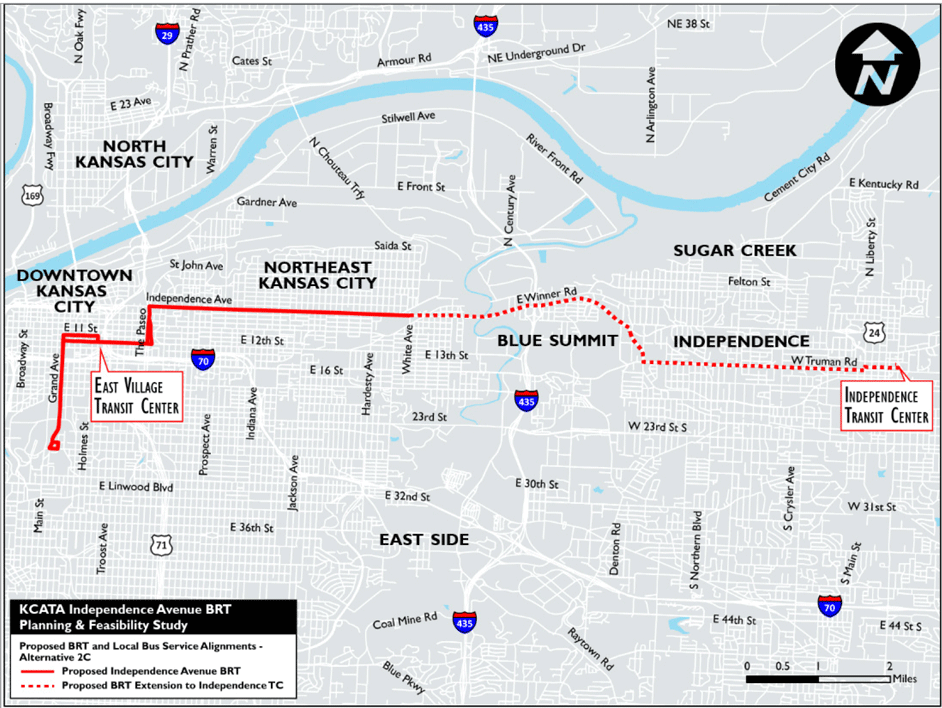Independence Ave. BRT Feasibility Study
KCATA is studying the area of Independence Avenue to see if it is appropriate for the development of a new MAX Bus Rapid Transit (BRT) service along Independence Avenue. This would potentially make this the fourth MAX corridor following Main MAX, Troost MAX and Prospect MAX. The study began in early 2018.
The project study area is approximately 12 miles long, from the downtown Kansas City, east to the historic square in downtown Independence. Many of the neighborhoods along the Independence Avenue corridor are some of the most historic and diverse in the entire region. In recent decades, the Historic Northeast has become home to many immigrants and refugees from around the world, with over 50 languages spoken in the area.
While planning for an Independence MAX is still in its early phases, planners used data to evaluate several possible alignments in downtown Kansas City and within the City of Independence. Through this evaluation process, input from the Advisory Committee and public input, a preferred alignment was developed.
The BRT alignment, with ten-minute frequency, would operate between Crown Center and Independence Avenue and White Avenue in Kansas City, Mo., on weekdays. Once an hour, MAX would extend to the Independence Transit Center to connect to intra-city RideKC routes in Independence. The hourly connection to Independence would operate on Weekdays and Saturdays, with no Sunday service as consistent with current service offerings in Independence.
Development of safe and convenient connections to the Independence Avenue corridor by multiple transportation modes is an important component to the Independence Avenue BRT Planning and Feasibility Study. Early in the study, the City of Kansas City informed the study team of the developing city-wide Bicycle Master Plan’s recommendation to build a protected bicycle facility along Independence Avenue from approximately Paseo Boulevard east to the city limit.
Read the RideKC Connecting Independence Ave. BRT Planning and Feasability Study
March 2019, PDF format, 123 pages total: Part 1 - Part 2
The next step in studying Independence BRT would be an environmental review.
A new funding mechanism is required to support any new regional services.
Map of BRT Alignment
Station Drawing Showing Features of BRT Stop
Potential BRT station features include translucent panels, decorative roof panels, station markers with integrated information panel, sloped concrete bench, ramps on both sides of platform, and raised boarding platform.

